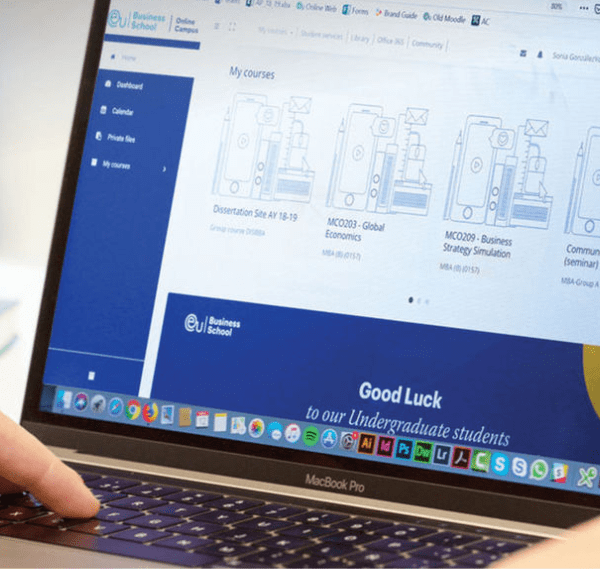The term “agile” has been adapted to a variety of settings, including software development, construction, learning, manufacturing and management. It refers to a set of principles outlined in The Manifesto for Agile Software Development (2001), whose authors declared that they valued1:
- Individuals and interactions over processes and tools
- Working software over comprehensive documentation
- Customer collaboration over contract negotiation
- Responding to change over following a plan.
Agile Organizations
An agile business refers to an organization that operates in a flexible and adaptive manner to quickly respond to changing market conditions, customer needs, and emerging opportunities.
Key characteristics of an agile business include:
- Flexibility: Agile businesses are able to adjust their strategies, processes, and operations rapidly to accommodate changes in the external environment or internal requirements. They are not locked into rigid plans or structures.
- Customer-Centric: Agile businesses prioritize understanding customer needs and feedback, using this information to shape their products, services, and strategies. They often engage in continuous customer feedback loops to stay aligned with market demands.
- Iterative Approach: Instead of planning everything upfront, agile businesses often work in iterative cycles. They develop minimum viable products (MVPs), gather feedback, and make incremental improvements based on that feedback.
- Cross-Functional Teams: Agile organizations often organize their teams into small, cross-functional units that are empowered to make decisions and take ownership of their work. These teams work collaboratively to achieve specific goals.
- Rapid Decision-Making: Agile businesses encourage quick decision-making at all levels of the organization. This enables them to respond promptly to opportunities and challenges.
- Embracing Change: Agility involves a willingness to adapt and even welcome change. Agile businesses see change as an opportunity for improvement rather than a disruption.
- Transparency and Communication: Effective communication and transparency are crucial in agile organizations. Information is shared openly, and teams collaborate to achieve common goals.
- Continuous Learning: Agile organizations have a culture of continuous learning and improvement. They regularly review and reflect on their processes to identify areas for enhancement.
- Lean Principles: Many agile businesses adopt lean principles to reduce waste and increase efficiency in their processes.
- Data-Driven: Agile organizations rely on data and metrics to inform their decisions and measure their progress. This data-driven approach helps them make informed choices and track their performance.
Agile principles and methodologies, such as Scrum, Kanban, and Lean, provide frameworks and tools that organizations can adopt to become more agile. Originally associated with software development, these methodologies have been adapted and applied to various business functions, including marketing, project management, and even entire organizational structures.
The goal is to enhance an organization’s ability to adapt, innovate, and deliver value more efficiently in today’s fast-paced and dynamic business landscape.
How Do You Build Business Agility?
Building business agility requires a deliberate and often ongoing effort to transform your organization’s mindset, culture, processes, and structures. Here are steps and strategies to help you build business agility:
- Leadership Buy-In:
Begin by securing support from top leadership. Leadership buy-in is critical for any organizational change initiative. This includes clearly articulating why you want to become more agile. Establish specific goals and outcomes you aim to achieve through increased agility.
- Assessment and Baseline:
Evaluate your current state of operations, including processes, culture, and organizational structure. Understand your strengths and weaknesses in terms of agility.
- Create an Agile Culture:
Foster a culture that encourages adaptability, collaboration, experimentation, and learning. Encourage open communication and transparency.
- Training and Education:
Provide training and education to employees at all levels to help them understand agile principles and methodologies.
- Cross-Functional Teams:
Organize your teams into small, cross-functional units. These teams can work autonomously and have the authority to make decisions related to their areas of responsibility.
- Implement Agile Frameworks:
Choose an agile framework that suits your organization’s needs. Common ones include Scrum, Kanban, Lean, and SAF (Scaled Agile Framework). Tailor the framework to fit your specific context.
- Iterative Processes:
Adopt iterative and incremental development practices. Encourage teams to deliver minimum viable products (MVPs) and gather feedback for continuous improvement.
- Embrace Change:
Encourage a mindset that welcomes change as an opportunity for improvement rather than a disruption. Be prepared to pivot when necessary.
- Data-Driven Decision-Making:
Make decisions based on data and key performance indicators (KPIs). Use metrics to track progress and adjust strategies accordingly.
- Customer Focus:
Prioritize understanding customer needs and feedback. Engage in continuous customer feedback loops to ensure your products or services align with market demands.
- Agile Leadership:
Train and develop leaders to be agile themselves. They should lead by example and support their teams in adopting agile practices.
- Communication and Collaboration:
Promote open and effective communication across teams and departments. Foster collaboration and cross-functional cooperation.

- Experimentation:
Encourage teams to experiment with new ideas and approaches. Embrace a fail-fast mentality where learning from failures is valued.
- Feedback Loops:
Implement feedback loops at various stages of your processes. This helps teams gather input and adjust their work accordingly.
- Continuous Improvement:
Create a culture of continuous improvement. Regularly assess and refine your agile practices to adapt to changing circumstances.
- Remove Bottlenecks:
Identify and eliminate bottlenecks or obstacles that hinder agility. This could involve streamlining processes or reallocating resources.
- Scalability:
If necessary, consider how to scale agile practices across the entire organization, especially if you’re a large enterprise. Frameworks like SAFe can help with this.
- Celebrate Successes:
Recognize and celebrate achievements and successes that result from increased agility. This reinforces the positive changes in your organization.
Final Thought
Building business agility is an ongoing journey, and it may take time to see significant results. Be patient, and continually assess your progress, adjusting as needed to meet your organizational goals and adapt to evolving market conditions.
If you’re interested in learning more about successfully building agile businesses, agile leadership and implementing agile principles, browse EU Business Schools programs here.










